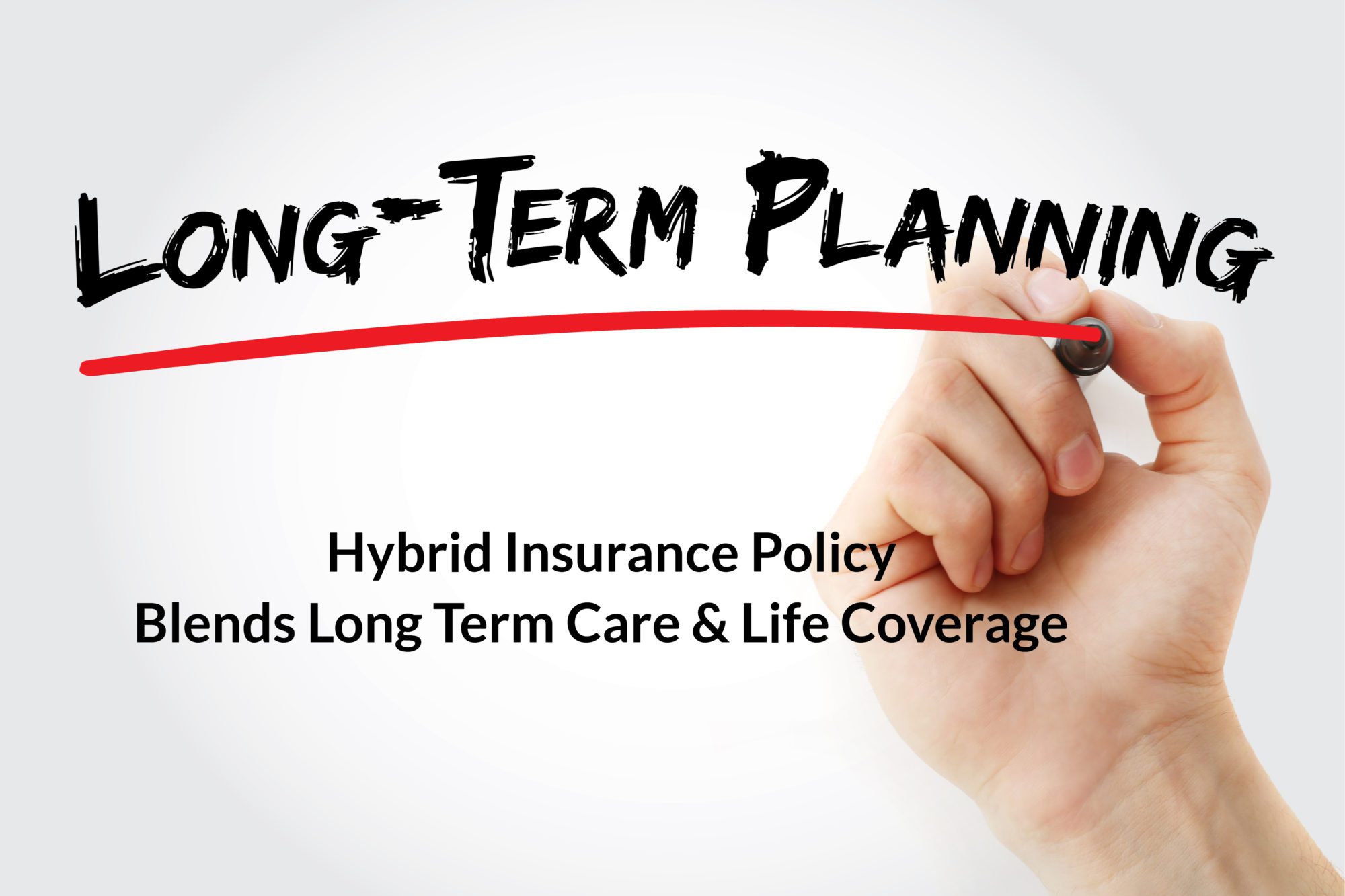
One of the biggest mistakes people often make in their health and life coverage plan is assuming they’ll never need long-term care services, or that if they do need these services, they will pay for them with their savings. Speaking from personal experience, my mother paid into a long-term care policy for many years, however the trigger for payment of benefits (loss of two or more Activities of Daily Living – ADL’s) only occurred in the last month of her life. A better solution exists today: a hybrid Life Insurance Policy with a Long-Term Care rider. This policy melds the two coverages together.
Here’s how these hybrid policies work:
- You pay for a universal life or whole life insurance policy, which builds up a tax-deferred cash value, in addition to providing life insurance that will pay a death benefit to your beneficiaries after your passing.
- If you need long-term care services, you can use a portion of the death benefit to help pay for the cost.
- Depending on the terms of the coverage, a $500,000 life insurance policy might pay from $200,000 to $500,000 toward the cost of nursing home care, in-home care and/or assisted living expenses.
- Your beneficiaries will receive any part of the death benefit that is not used to pay for long-term care expenses as life insurance proceeds.
This strategy may be done with a single upfront premium, a set of premiums for a fixed term, or ongoing premiums. Many policies will lock in premiums at the start. The cash value is invested and liquid after surrender charges, and the policies generally will provide a fixed interest rate for cash value growth.
These hybrid policies try to eliminate some of the friction points of long-term care insurance, such as:
- Premium hikes,
- Limited benefit periods,
- Worries that you may be rejected during the underwriting process, and
- The fact that if you never use your long-term care coverage, you see no return on your premium.
Is it good for your situation?
- A blended life insurance/long-term care policy costs more than a life insurance policy alone, but there are potential advantages that may make this additional cost worth it for your situation.
- You have some earmarked, guaranteed funds to help pay for any needed long-term care services. If you don’t need long-term care services, your beneficiaries receive the non reduced death benefit.
- In addition, universal policies typically charge a premium that is guaranteed to at least maintain the basic benefit, although it may not be enough to build cash value. That eliminates the problem of rising rates on long-term care insurance that prompt many people to shy away from buying this type of coverage.
If you decide to buy a blended life insurance/long-term care insurance policy, be sure you understand the long-term care benefits it would provide. Questions you may want to ask include:
- Exactly what type of long-term care services would the policy pay for in-home care? Assisted living? Adult day care? Nursing home care?
- How does the policy determine the amount of long-term care benefits it would pay? For example, does the policy pay a percentage of the total death benefit, or does it pay a percentage of the death benefit monthly?
- Can you add inflation protection coverage?
- Are there any conditions under which premiums could increase?
- Is the policy tax-qualified, so that long-term care benefits won’t be taxed as income.
Every person’s needs vary, but if this type of dual long-term care and life insurance coverage suits your needs, you’re able to buy two types of insurance protection in a single policy – and with a single premium. Talk to one of our agents to find what coverage is best for you




